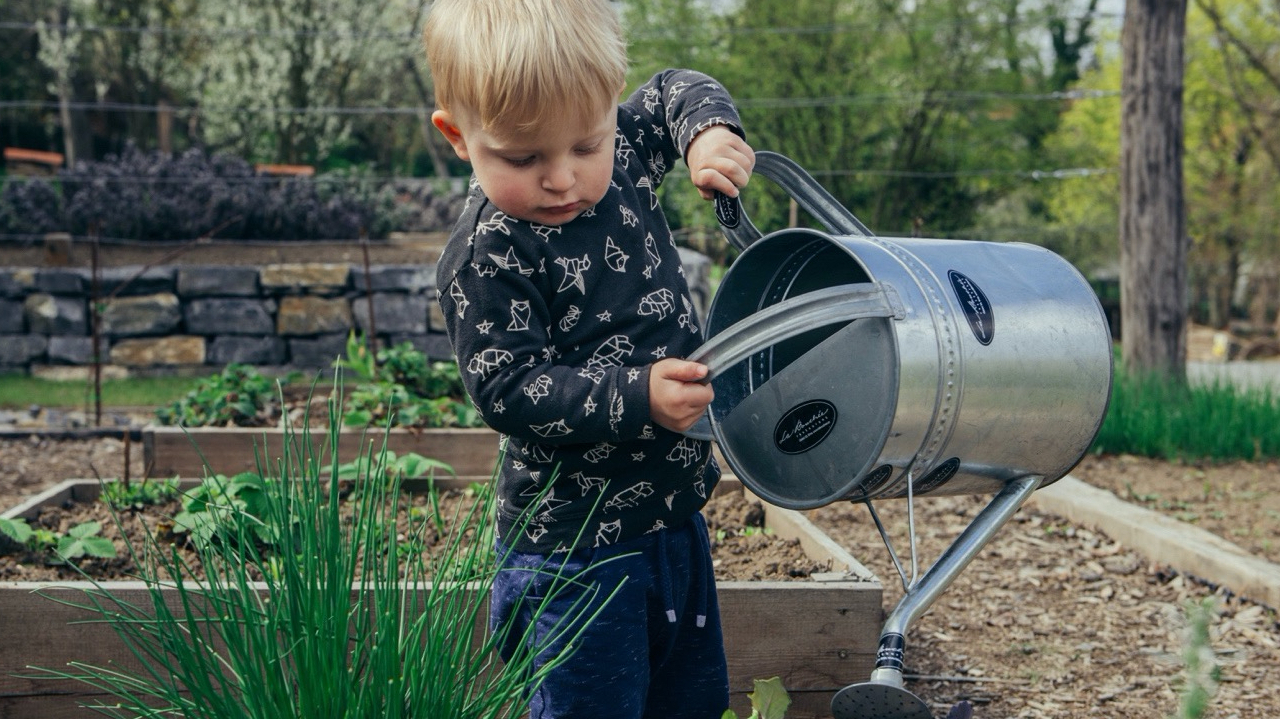Creating an Engaged Eating Environment: 7 Tips for Gardening with Young Children
- Written by: Samira Ali & Lynne Lafave

Learning about healthy eating in different ways helps children to develop positive attitudes with food. Gardening is a great way to teach children about healthy eating. Gardening in early learning and child care takes some creativity, patience, and persistence. However, creating a small garden with children is a great outdoor activity that integrates play and learning and even promotes physical literacy!1
7 Tips for Gardening with Young Children2
1. Engage Children Throughout the Entire Process
Children learn better when they are involved in the process from beginning to end; have children take turns placing the seeds in the soil, watering the plants, and harvesting the produce. Encourage discussions throughout the whole process by asking:
- “How do things grow?”
- “What do plants need to be healthy?”
- “How do those plants help keep us healthy?”
2. Choose Plants That Grow Easily and Quickly
As the seedlings grow, the children will become more excited to see the plants thrive. To help capture children’s interest, choose plants that will make visible progress within the first few weeks, such as:
- Chives
- Lettuce
- Basil
- Marigold
- Nasturtium
- Sunflowers
3. Teach Children About the Life Cycle of Food and Reducing Waste by Composting
Gardening is a great way to demonstrate the beginning phases of the plant life cycle, just as composting demonstrates the end phase of the life cycle. When composting scrap foods after mealtimes, discuss:
- what items can and cannot be composted
- how compost breaks down into nutrient-rich soil, which helps plants grow.
4. Read Gardening Story Books
There are so many great ways to get children excited about gardening! Read stories that teach children about the fun of gardening and healthy food options during story time. Check out the last few pages of this resource for some great book suggestions.
5. Have Children Draw or Colour Plant Labels
Drawing or colouring plant labels is a great opportunity to learn about plants. Discuss the colours of the plants and what they will grow to look like! Ask each child to draw or colour their own imaginative interpretation of the plants, which can be a provocation to teach the children more about the specific plants they have chosen.
6. Harvest Together!
When your fruits or vegetables are ready for harvest, do it together! Demonstrate how to gently remove the produce from the soil and help them understand the life cycle of the plants. Go over how a seed grows into a plant with the help of nutrient rich soil and water.
7. Use Garden Produce in your Cooking
When planting your garden, consider choosing plants that can be eaten. In addition to the usual produce that can be eaten, nasturtiums can be used in salads or as an edible garnish. By involving children in the gardening and cooking processes, they may get more excited about the food they are eating!
Gardening is a fun activity for kids that encourages a healthy eating environment and physical activity. For more reasons to start a garden with young children, visit: https://cheerskids.info/ActiveForLife-Gardening
References
1. Skelton, K., Herbert, A., & Benjamin-Neelon, S. (2019). Garden-based interventions and early childhood health: a protocol for an umbrella review. Systematic Reviews, 8(1), 310–310. https://doi.org/10.1186/s13643-019-1229-8
2. Alberta Health Services, CHEERS Virtual Communities of Practice (VCoP) Grant Material – Session 5: Learning about Nutrition, 2017.